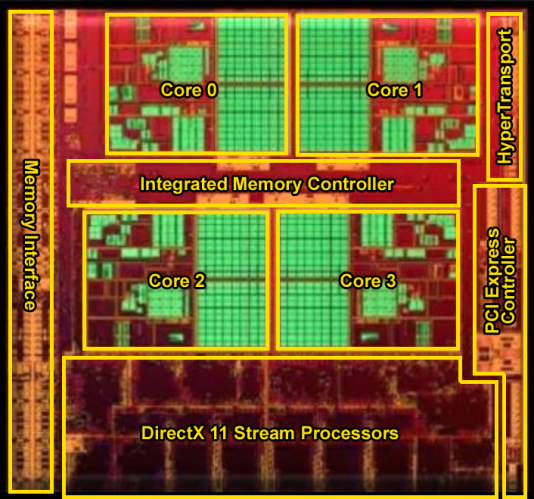It has been a rough few years for AMD as a player in workstations. But JPR senior analyst Alex Herrera sees light at the end of the tunnel.
By Alex Herrera
AMD has traveled a bumpy road in the workstation market, to some degree a result of the daunting logistics in its acquisition of graphics vendor ATI, but in large part due to its own ambivalence. But with its new Fusion strategy finally taking shape—not just on paper but in the market—the company is being presented with a fresh and compelling new path to reinvigorate its presence in workstations.
The company had two irons in the workstation fire over the past decade, selling both CPUs and professional-brand GPUs into workstation platforms. Those two thrusts were backed by very different intentions, but what both had in common was very uneven success in the market. AMD CPUs began appearing in top-tier OEM workstations back in 2004, and by 2006 had big-name workstation partners HP, Sun, and Fujitsu shipping Opteron-based workstations. With strong Tier 1 partnerships in place, it looked like AMD was poised to grow market share considerably, toward levels comparable to its position in servers.
By contrast, ATI long had its hand in professional-caliber graphics, after it inherited the FireGL line from S3, as well as by its own accord (for example, providing base graphics for now-obsolete RISC/Unix workstations from vendors like HP and Evans & Sutherland). But as AMD wrestled with the logistics of assimilating ATI following its much-publicized acquisition in 2007, AMD’s market share in workstation withered, falling to a token share of under 10% by mid 2008. Fortunately, AMD’s problems in professional graphics weren’t about commitment or technology, and by 2009, it was clear that AMD’s graphics arm was getting back on track. When it launched its Evergreen GPU generation in September of that year—notably beating rival Nvidia to the punch by a good six months—the company set off on a rebound in the professional graphics market, pushing its share modestly but steadily up.

By contrast, while AMD FirePro workstation graphics revived, its CPU sales into workstations fell dramatically. When it came to CPUs, even from the beginning AMD may not have had its heart into workstations. But regardless of strategy, the dual-socket models were essentially low-hanging fruit, as they shared much of the same technology as a machine the company absolutely had a very keen interest in: high-volume dual-socket servers. So even though AMD may not have cared so much about selling CPUs into workstations, the business was a fairly easy add-on to their server thrust, especially since many of the early customers interested in Opteron were those trying to find a migration strategy to get off dead or dying RISC/Unix machines. With its x86 architecture, 64-bit capability and superior (at the time) dual-socket performance, Opteron (particularly on Linux) was a no-brainer decision.
But the flow of RISC/Unix refugees slowed and it lost a significant volume partner in Sun. Despite having workstation market leader HP still on board, AMD was clearly not placing workstations as a priority. Its posture toward the market was obvious in both its marketing and roadmaps. And without a stated mission to compete and win with CPUs in the workstation marketplace, its market share fell precipitously, with the company now responsible for exactly zero percent of the workstations shipping from Tier 1 OEMs.
Times have changed, though, as has AMD’s product portfolio and roadmaps. Most specifically, after schedules slipped and project code-names came and went, Fusion has arrived. The silicon integration of CPU and GPU, Fusion presents AMD a unique opportunity to not only attack consumer and commercial segments, but offer a compelling solution for cost-effective entry-class workstation platforms.
In addition to four Phenom-class x86 cores, the current high-performance Fusion processor Llano (Fusion A series) integrates a competitive DirectX 11 compliant GPU, derived from Evergreen technology. Now Intel’s got its own die-integrated combination of CPU and GPU in Sandy Bridge (and follow-ons), but when it comes to performance graphics, AMD holds the advantage hands-down. And since Nvidia has clearly (and I think wisely) chosen the ARM path to pursue rather than x86, AMD has a leg up on both when it comes to establishing a highly-integrated, high-performance end-to-end workstation graphics platform.
AMD’s strength with such a platform dovetails well with market trends which have pushed OEMs to drive entry workstation prices down as much as possible in an effort to entice the biggest pool of as-yet-largely-untapped would-be workstation buyers: SMB professionals, especially AutoCAD users. And with the company disclosing that Llano’s successor, Trinity, is expected to offer a “Northern Islands” class GPU (the technology driving today’s top-end Radeon gaming hardware) and a 50% boost in system performance, Fusion looks to present AMD a unique opportunity to reconsider its strategy and priorities for the growing workstation market.

The workstation market has seen a mixed bag of success from AMD as of late, but on the professional graphics front, the company is again building momentum. And AMD CPUs could very well again find a home in high-volume workstations. In an interesting twist, where higher-end dual-socket machines provided the foothold the first time around, this time it could very well be the opposite end of the market that provides the beachhead, courtesy of Fusion APUs.
Alex Herrera is a senior analyst for Jon Peddie Research.





